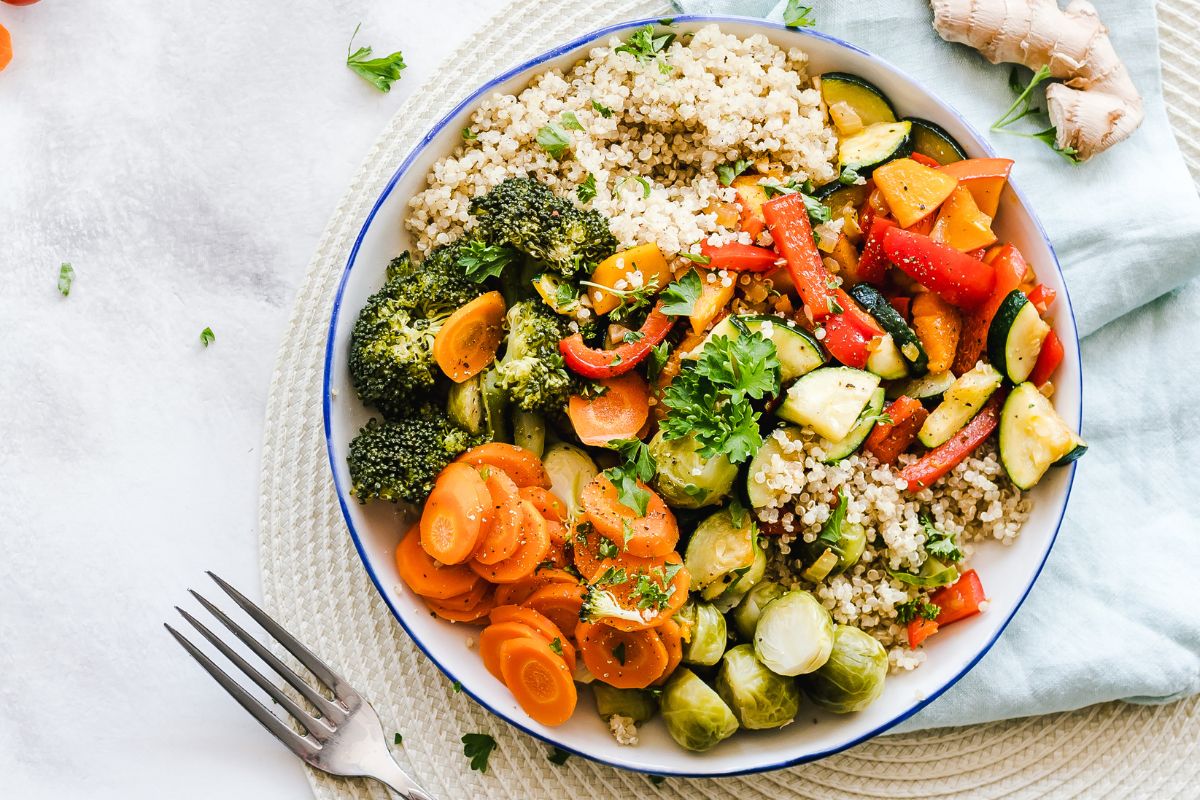As the name suggests, wheat belly (also commonly called beer belly) is the bloated look your belly could get after eating wheat. It was observed by cardiologist William Davis, MD, while he was on holiday.

After a breakfast of toast he saw his stomach was bloated and he felt sluggish, when compared to a breakfast of eggs which led him to have more energy.
He decided that wheat was the cause of the weight gain, and in the same vein it must be the cause of all weight gain across the globe.
In 2011, he published a book on his observations, ‘Wheat Belly: Lose the Wheat, Lose the Weight, and Find Your Path Back to Health’ which cited wheat as the cause of the rising obesity levels and proposed a wheat-free diet.
This book immediately gained popularity amongst the dieting community and also received a lot of criticism based on its lack of evidence.
What Are Its Benefits
The wheat belly diet promises a loss of weight and also increased energy levels. Followers of the diet have said it even helps them to sleep better at night.
It is true that cutting down on the amount of wheat in a person’s diet can help those with gluten sensitivity or celiac disease. However, Davis’ proposed diet didn’t just include cutting down on wheat.
What You Can’t Eat
Here is a short list of some of the foods that Davis has recommended you stop eating while on this diet:
- Bread
- Pasta
- Cereal
- Doughnuts
- Wheat, barley, spelt, rye, and certain oats
- High fructose corn syrup
- Salt
- Rice
- Potatoes
- Soda
- Fruit juice
- Sugary foods
- Dried fruit
- Legumes
- Trans fats
- Fried foods
- Cured meats
- Beer
It should be noted that this diet is different to a gluten-free one.
This is because the wheat belly diet is against common gluten-free replacements, as they also contain starches such as rice, corn, potato and tapioca, which won’t help with weight loss (Check out Is Corn A Grain here).
What You Can Eat
Below are some of the foods recommended to eat when following this diet:

- Vegetables
- Certain fruits such as berries, apples and oranges (less of sugary fruits like pineapple, mango and banana)
- Full fat cheese
- Raw nuts
- Plant based oils
- Grass fed meat and eggs
- Ground flaxseed
You can also eat limited quantities of:
- Full fat cottage cheese, yogurt, milk and butter
- Fermented soy such as tofu, miso and natto (Check out another type of fermented food here)
- Olives, avocados, pickles and raw seeds
- Other grains such as quinoa, millet, amaranth and chia
- Some beans
While most alcoholic drinks aren’t allowed due to their sugar content, wine is okay because of its supposed heart healthy nature.
The book promotes listening to your natural hunger cues, rather than calorie counting. Davis also suggests exercising, but he doesn’t specify how much.
What Are Some Downsides
Since the wheat belly diet restricts so much food, it will greatly increase any time you will spend preparing food.
It will require you to read all the labels on packaged foods and will more than likely completely change how you would usually shop for food.
You will also need to be buying more whole and organic foods to match the requirements of this diet. Your general food bill will naturally increase from these purchases.
The wheat belly diet may also lead to some nutrient deficiencies. Wheat products naturally contain B12 and iron, which you will need to take supplements to regain.
Wheat is also known as providing a high source of fiber, which is needed for digestion. If you completely cut wheat out of your diet without needing to, it can cause an unhealthy digestive system.
If you don’t consume wheat at all and then one day you choose to have a ‘cheat’ day then you can cause major digestive issues as your body is no longer used to processing it.
Losing weight doesn’t have to be this challenging. Especially when other, less restrictive diets, have been proven to work just as well (if not better) than this diet.
Why It May Or May Not Work
The general consensus is that if you lose weight from following this diet, it is probably from making healthier food choices, rather than cutting out wheat.
The requirements of the wheat belly diet also have you cut out sugary foods and soda, these products have been shown to make you gain weight when consumed in excess.
The cutting down of salt in the wheat belly diet is also better for blood pressure.
However, the wheat belly diet promotes the consumption of full fat dairy and red meats in its limited meal plans. These foods have been proven to not be healthy to those with high cholesterol or suffer from heart diseases.
The exclusion of legumes, also removes a vital source of protein (Find out if Rice Is A Legume Here). A lack of protein can cause reduction of muscle mass and slow your metabolism.
Davis also claims that all wheat has been genetically modified, this is not true as a lot of ancient grains exist which are the exact same strain as they would’ve been thousands of years ago.
Conclusion
The wheat belly diet is a very strict diet that is not easy to stick to. The benefits that it provides can be gained through other, easier means.
Despite Davis’ claims, there is no proof that gluten is the cause of the rise in obesity.
If you find that your stomach is bloated after a wheat-heavy meal, you may have an undiagnosed gluten sensitivity and will need to resort to a more gluten-free diet.
For those wishing to lose weight, the best way is to eat a balanced diet (this includes wheat, sugar and fat) and exercise regularly. Being smarter about what you eat is always better than cutting down the food you can eat.
Plus, wheat and grains are delicious (see also ‘10 Triticale Grains‘)! They provide many great health benefits that you will struggle to get anywhere else.








